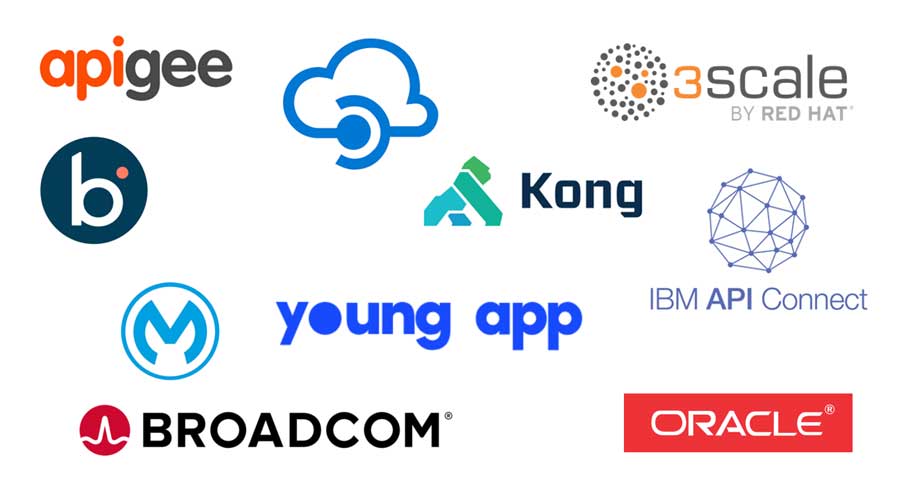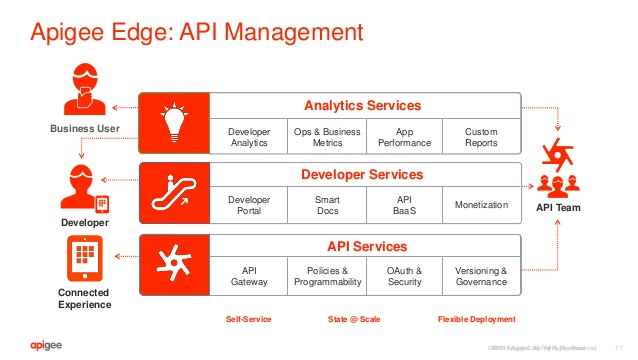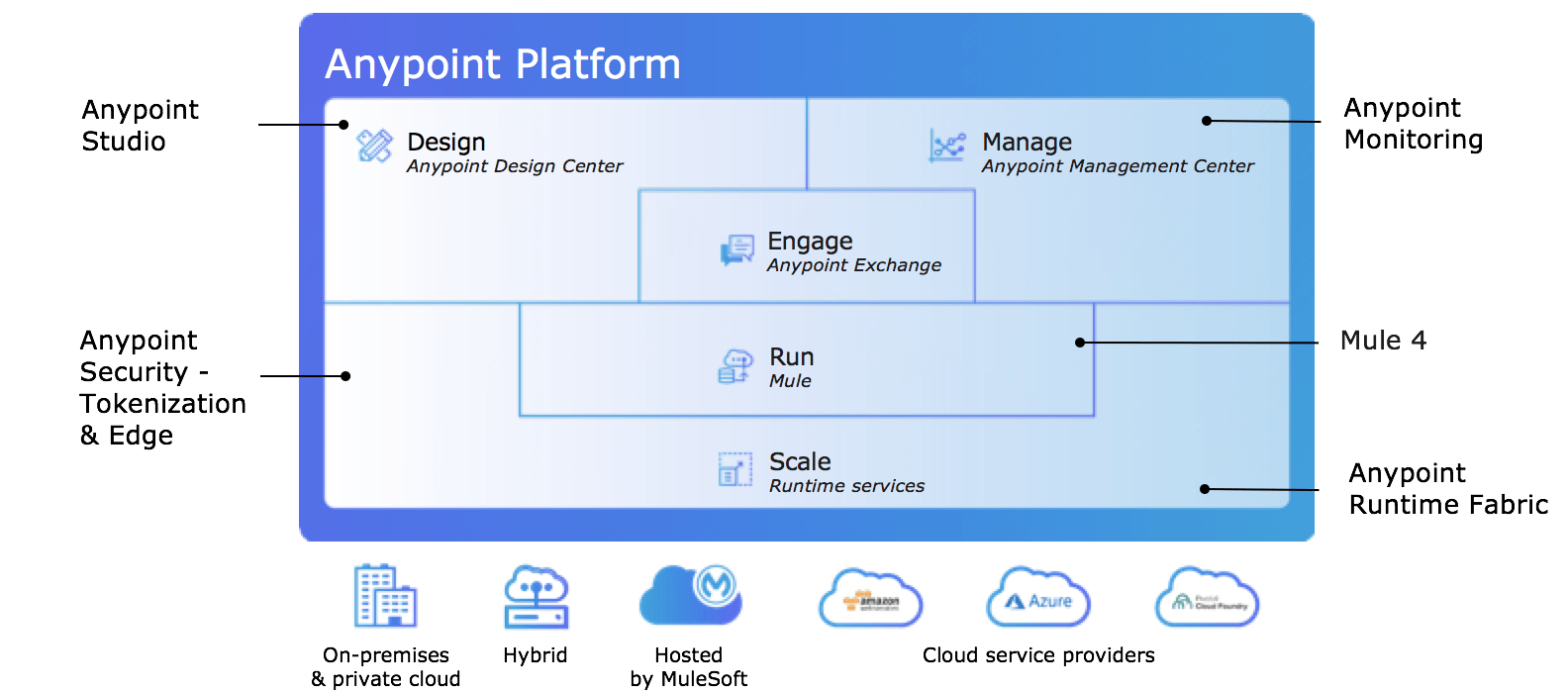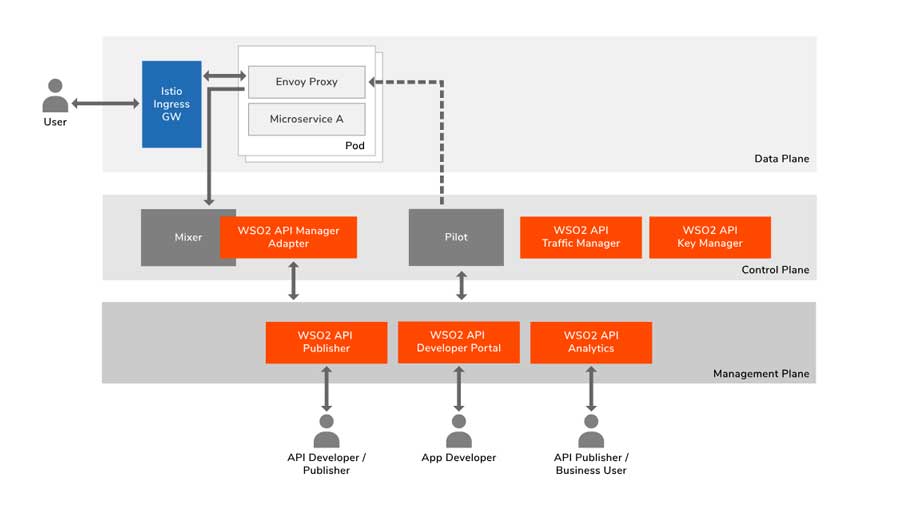Month: May 2022
API Management Essentials: Strategies and Tools
What is API management?
Managing the application programming interfaces means analyzing, controlling, and distributing the APIs that connect your software to other applications, either on-premises or in the cloud. Organizations often create their own APIs to connect different pieces of in-house software and thus create infrastructure inside the organization or to pair in-house software with third-party software.
Either way, application programming interface management means controlling all the APIs used by particular software, taking care of their security, usage, and lifecycles.
The most important components of API management are:
- Gateways
- Lifecycles
- Developer portal
- API analytics
It’s vital to choose a good vendor. Some companies choose to create their own tools, but most look for vendors that offer API management tools or platforms that match their needs and strategies.
In this article, we’ll discuss what application programming interface management is used for, and how to design and manage APIs by choosing the right tool for a specific API management strategy.
Modern application programming interfaces are less dependent on service-oriented architectures (SOAs) thanks to the open API movement. Application programming interfaces now use services like JSON or REST. Some tools and platforms can turn SOAP, MQ, or JMS interfaces into RESTful APIs and JSON content.
Three strategies for API management
API integration
Application programming interfaces are basically gateways through which pieces of software talk to each other and exchange information. Integrating them means connecting applications through interfaces and allowing them to perform functions. The correct API approach helps to modernize legacy enterprise systems and optimize software.
Application programming interfaces help apps exchange data and work properly without having to worry about compatibility and versioning. To integrate two apps through APIs, you’ll need an API management solution.
The complexity of your integration will depend on the particular solution. Some tools make it easy thanks to pre-installed integrations. Such solutions provide mapping between apps and don’t require complex actions. However, if you need to integrate two enterprise apps, this will require coding expertise and the use of complex library capabilities.
B2B integration
When two or more businesses need to automate their operations and communicate effectively, they can use interfaces to exchange information and coordinate processes. B2B integrations are used to connect businesses to customers, suppliers, partners, and other entities.
B2B integrations can help businesses transition from paperwork to digital document management or to automate supply chains. How exactly does this work?
A B2B integration securely moves information from an internal source to an external application through API management software.
DaaS
Data as a service (DaaS) allows businesses to access data storage, integration, processing, analytics, and other cloud services via application programming interfaces. This makes data processing and management easier and more flexible, though for some businesses, DaaS may not be functional enough because of security limitations. These limitations can be overcome, however, by encrypting data.
The main goals and benefits of API management
So what exactly can you use API management for? Let’s review the use cases.
1. Analytics and decision-making
Analytics will show you how organizations use your APIs, which of them fail and how often, how many apps use your them, and for what purposes. This will help you improve your interfaces or decide which to develop next.
2. Security
APIs expose an organization’s data, which is why it’s very important to pay attention to the security of your APIs. Certain tools can help with this. An API management solution can help you create different levels of access for your users and thus protect your data from unauthorized access. An API management system also helps you see what modern security protocols are used.
3. Lifecycle management
An API management tool or platform will help you design, implement, and retire your interface, supporting its whole lifecycle.
4. Centralized visibility
This feature will help you see all your application programming interfaces in one place and avoid repetitions. It will also allow your developers to see issues they haven’t yet addressed and will make it easier for you to plan further development.
5. Monetization
You can create an additional revenue stream by monetizing your application programming interfaces. An API management tool can help you with billing, tracking usage, and sharing revenue with your partners.
6. Creating a software ecosystem
Management software will allow you to connect internal and external products into a single ecosystem for efficient communication and automation.
7. Great user experience for API consumers
Developers who use your interfaces will be able to enjoy well-written documentation and guidelines.
API management use cases
Let’s see how application programming interface management is used in real-life applications. I’ll show you a few examples from domains in which Mobindustry has expertise.
FinTech: Wells Fargo
Wells Fargo is a large US bank that wanted to create an omnichannel experience for their users. For this, they needed to build a banking platform that would connect to their existing services via APIs.
The Wells Fargo Gateway unites user experiences on any platform, whether mobile or web. Wells Fargo used APIs to connect all their digital products into a single database, which helped them automatically update information on all platforms. For example, if a user performs an action on a mobile device, it will immediately be shown on the desktop web version of the Wells Fargo software as well.
Ecommerce: New York & Company
New York & Company is a world-famous retailer that needed to connect their brick-and-mortar and online stores into a single system that would provide users with a seamless omnichannel experience.
API management allowed New York & Company to take third place in BusinessWire list of best omnichannel retailers
To connect their ecommerce store on web and mobile and also gather data in real-time from inventory, New York & Company used the MuleSoft API management platform. With the help of application programming interfaces, they connected their web and mobile software to a shared database and integrated payment gateways that allow users to pay for products digitally.
This approach allowed New York & Company to take third place in BusinessWire list of best omnichannel retailers.
API management tools vs API management platforms
Software simplifies application interface development and maintenance. The market is full of solutions, from small tools to large platforms. Let’s figure out what the main differences are between these two types of software and what you should go for.
Each API management tool has its own unique set of features, but basically they’re a combination of typical features such as:
- Documentation tools
- Security tools
- Sandbox environments
- Backwards compatibility
- API connection automation
- Version control
- Traffic monitoring
- Memory management and caching
- Load balancing and fault tolerance
You can build tools on your own if you want to keep all your data and be responsible for its safety. But many companies go for third-party solutions they can purchase as a service, and choose the best API management software for their goals.

Some companies manage to create their own ecosystems of API management tools, cherry-picking the features they need from different tools. If you feel that stitching different tools will make your work process too complicated, you should consider moving to an enterprise API management platform.
An API management platform usually combines everything enterprise software might need and offers a standardized process for creating, managing, and deploying APIs. This helps you organize your API management processes.
An API management platform also acts like a proxy and protects your backend services from downtime because of excessive requests from customers, partners, or internal users.
The best part of API management platforms is analytics, which is usually included in the feature set. Analytics allows you to see who uses your APIs and how, and this knowledge makes it easier to manage your developer community, plan further development, and improve your interfaces based on data.
Platforms also usually have developer portals that make it easy to distribute and acquire APIs.
Let’s now review the most popular API management platforms you can use to organize and improve your application programming interfaces.
Top 3 API management platforms
There’s a large number of tools and platforms to choose from, as the API management solutions market heats up. The best way to choose the platform that suits you best is to compare platform capabilities to your needs. A platform should cover all of your needs, whether you’re a small startup or an enterprise.
Here are the three most popular platforms that you can use for enterprise API management.
1. Google Apigee API management platform

The Apigee platform from Google allows you to design, develop, secure, and manage your APIs in a single environment. With Apigee, you can develop your own API proxies and use code to customize application programming interface policies according to an API flow.
Google cloud API management tools have extensive security features, allowing you to enforce different protocols including OAuth 2.0, SAML, two-way TLS, and various encryption protocols across all your APIs .
Apigee Edge is an additional tool that can help you manage microservices as APIs. Other features of Apigee Edge include:
- API publishing
- API analytics
- API monitoring
- API monetization
- Developer portal
2. MuleSoft Anypoint Platform

The MuleSoft Anypoint Platform is a great solution for enterprises. It offers a guided web interface for API development and automatically creates documentation from API specifications. A mock service allows developers to gather feedback before an API is implemented.
MuleSoft can transform data among any data formats — for example, XML and JSON. Just as other large enterprise API platforms do, MuleSoft allows developers to deploy, design, protect, manage, and reuse their APIs.
All these services support cloud based API management, as well as on-premises, or using a hybrid approach.
Deploying and testing APIs with MuleSoft is easy, as it allows you to plug integrations into CI/CD pipelines with support for Maven and Jenkins.
3. WSO2

WSO2 is a fully open-source API management and integration platform that you can use in the cloud, on-premises, and in a hybrid environment. It provides full-cycle management and monetization. WSO2 offers specific products to companies in the healthcare and finance industries, so if you’re a healthcare organization or a FinTech product founder, WSO2 might be the best option for you.
WSO2 is a great fit for both monolithic and microservice architectures. It also offers advanced analytics for tracking how developers use your APIs.
API management success metrics
How can you know you’ve chosen the right API management platform or toolset? Let’s see what makes API management truly successful.
1. Dependability. This metric refers to the availability of your APIs to developers for a certain number of API calls within a certain timeframe. Quotas protect APIs from being overloaded and make them easier to manage. Many API providers base their pricing on quotas.
2. Flexibility. This refers to the number of options developers have when they adopt APIs. The more flexible your APIs, the more development and management they require.
3. Quality. Quality is measured mostly by developer satisfaction. If developers use your APIs, don’t come across any serious problems, and feel their expectations are met, this means your APIs are high-quality.
4. Speed. You can increase responsiveness by throttling and caching. These techniques will allow you to improve access latency and throughput.
Final thoughts
Application programming interfaces are currently the most widely used way to integrate services into software and connect different apps inside an organization. Some companies create APIs to further monetize them; others use them to build internal ecosystems for end users or employees.
In all of these cases, API management is required. API management platforms and tools help developers and businesses create convenient API infrastructures, protect APIs from hackers, monetize them, and get insights on how they’re used by developers.
APIs are currently the most widely used way to integrate services into software and connect different apps inside an organization
In this article, I explained how to choose the right API management and development platform, how to understand the success of your API system, and what features you need to look for in tools to make sure your application programming interfaces are organized and secure.
If you want to build an omnichannel experience, integrate services into your software, and create an ecosystem of products for your customers or internal operations, feel free to contact us. Our backend developers are able to build reliable APIs for any kind of integration.


